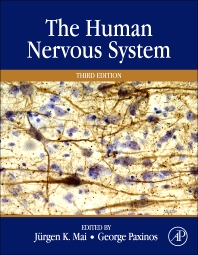Books in Neuroscience
Elsevier's Neuroscience collection empowers educators, researchers, and students with actionable knowledge to drive collaborative research and advancements in the field. Content covers the nervous system's intricate workings, covering branches like Affective, Behavioral, and Cognitive neuroscience to investigate the neural basis of emotions, behavior, and cognitive functions. Spanning from Molecular and Cellular Neuroscience to Developmental Neuroscience, content provides insights into brain function in health and disease.
- 1st Edition
- Volume 105
- February 11, 2012
- Wolfgang Grisold + 1 more
- English
- Hardback9 7 8 0 4 4 4 5 3 5 0 2 3
- eBook9 7 8 0 4 4 4 5 3 5 0 3 0

Neuro-Oncology, Part II
- 1st Edition
- Volume 104
- February 11, 2012
- Wolfgang Grisold + 1 more
- English
- Hardback9 7 8 0 4 4 4 5 2 1 3 8 5
- eBook9 7 8 0 4 4 4 5 3 4 9 5 8

Neuro-Oncology Part I
- 1st Edition
- Volume 56
- January 25, 2012
- English
- Hardback9 7 8 0 1 2 3 9 4 3 9 3 4
- eBook9 7 8 0 1 2 3 9 7 8 3 9 4

The Psychology of Learning and Motivation
- 1st Edition
- Volume 195
- January 25, 2012
- English
- Hardback9 7 8 0 4 4 4 5 3 8 6 0 4
- Paperback9 7 8 0 4 4 4 6 0 2 2 7 5
- eBook9 7 8 0 4 4 4 5 3 8 6 7 3

Evolution of the Primate Brain
- 1st Edition
- January 18, 2012
- Bernard Baars + 1 more
- English
- eBook9 7 8 0 1 2 4 1 5 8 6 5 8

Fundamentals of Cognitive Neuroscience
- 2nd Edition
- December 7, 2011
- Michel Billiard + 1 more
- French
- eBook9 7 8 2 2 9 4 7 2 0 2 1 5

Les troubles du sommeil
- 3rd Edition
- November 14, 2011
- Juergen K Mai + 1 more
- English
- Hardback9 7 8 0 1 2 3 7 4 2 3 6 0
- eBook9 7 8 0 0 8 0 9 2 1 3 0 3

The Human Nervous System
- 3rd Edition
- November 3, 2011
- Phillip A. Low
- English
- Paperback9 7 8 0 1 2 3 8 6 5 2 5 0
- eBook9 7 8 0 1 2 3 8 6 5 2 6 7

Primer on the Autonomic Nervous System
- 8th Edition
- November 2, 2011
- Scott Brady + 5 more
- English
- Hardback9 7 8 0 1 2 3 7 4 9 4 7 5
- eBook9 7 8 0 0 8 0 9 5 9 0 1 6

Basic Neurochemistry
- 1st Edition
- Volume 101
- October 29, 2011
- English
- Hardback9 7 8 0 1 2 3 8 7 7 1 8 5
- Paperback9 7 8 0 3 2 3 1 6 4 5 2 8
- eBook9 7 8 0 1 2 3 8 7 7 2 3 9

Biomarkers of Neurological and Psychiatric Disease
Related subjects
Behavioral neuroscience
Cognitive neuroscience
Developmental neuroscience and regeneration
Molecular neuroscience
Neural aging
Neuroanatomy
Neurobiology
Neurochemistry
Neuroendocrinology
Neurogenetics
Neuroimmunology
Neurology
Neuropathology
Neuropharmacology
Neurophysiology
Neuroscience general
Neuroscience methodology
Neurotoxicology
Sensory systems